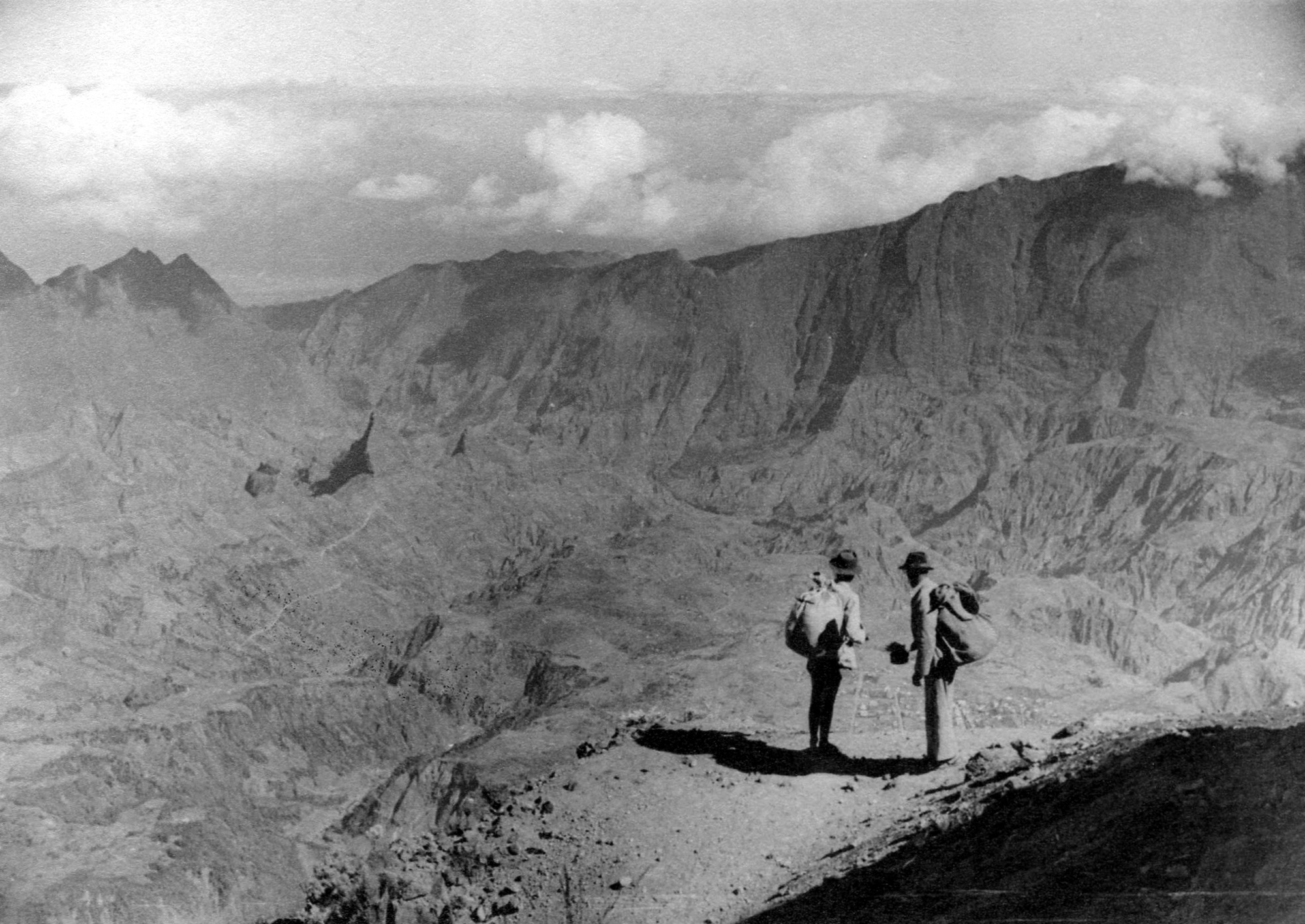
- Home
- Archaeology on Reunion Island
- Settling in the Hauts
- Change of air
The first people to venture into Les Hauts were the marrons and their hunters, followed by the Petits-Blancs. Its geological benches, fertile zones and thermal water sources then provided a draw for wealthy visitors from Les Bas.
History of tourism on Réunion
A wind of change blew through Réunion during the 19th century with the growth of holiday resorts for colonial elites in Les Hauts. The three cirques attracted spa tourists, including a spa in Hell-Bourg, and riverside pools in Cilaos and Mafate. Hiking also became a favourite pastime of the local elite, with the creation of hundreds of pathways linking the cirques and the high plains. Only the Fournaise massif continued to offer hikers a challenging climb until the 1970s.
Tourism shifted to the west coast in the 1960s, and the mountains became a simple backdrop until their return to favour with holidaymakers in search of authenticity and nature from the 2000s onwards.
Connecting Les Hauts to the rest of the island
The interest shown in Les Hauts by the island’s elite and visitors from abroad helped spur the development of transport infrastructure in these high-altitudes regions. Bridges and passable roads were built to make it easier for spa tourists to reach the cirques. Grand secondary residences and sumptuous villas were built in the villages that sprang up around churches and visitor attractions. The Petits-Blancs diversified their sources of income by working as sedan chair carriers, providing services and selling agricultural products. Middle-class families living on the coast had their favourite destinations: Dos d’Âne and Trois-Bassin were popular with people from Saint-Paul while the residents of Avirons and Saint-Leu preferred Tévelave.
Associated media
Open Media Library

Mafate sulphurous spring

Cilaos hot springs

Sedan chair, Cilaos

La Réunion : sanatoria, tourisme : livret-guide illustré (Réunion: sanatoria and tourist sites: an illustrated guidebook)

Group of hikers in the Salazie cirque

House in Hell-Bourg

Notre-Dame-des-Neiges and the Piton

